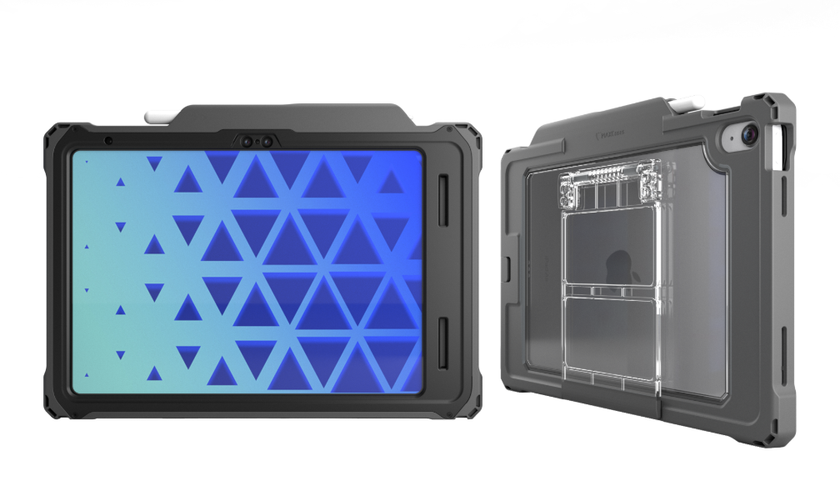EDTECH TRENDS FROM 2015
We asked our T&L and SchoolCIO Advisors to share what they saw as the biggest edtech trends of 2015. Here’s what they had to say.
ROBERT M. CRAVEN
SENIOR DIRECTOR OF TECHNOLOGY, TUSTIN (CA) UNIFIED SCHOOL DISTRICT

■ Districts moving to “dark fiber” in order to meet bandwidth demands.
■ The “homework gap” discussion is finally beginning to take place.
■ Coding is taking center stage.
■ Robotics, makerspaces, STEM, and CTE (career technical education) programs are reaching maturity at the middle-and high-school levels.
■ The edtech coaching model, to assist teachers with the influx of technology to meet the different levels of SAMR. Also the return of TOSAs (teachers on special assignment) to assist teachers.
■ The year vendors became extremely emboldened and persistent.
MATHEW SWERDLOFF
EXECUTIVE DIRECTOR OF EDUCATIONAL SUPPORT SERVICES, HENDRICK HUDSON (NY) SCHOOL DISTRICT

■ Finally, true mobile learning with low-cost devices and ubiquitous wifi.
■ Everything in the cloud, and less for us to manage.
■ Coding comes to K–5.
JEN LAMASTER
ASSISTANT PRINCIPAL, BREBEUF JESUIT PREPARATORY SCHOOL, INDIANAPOLIS(IN)

■ Makerspaces and the maker mindset.
■ 3D printing.
■ Self-paced learning tools.
■ Global connections.
■ Mobile, mobile, mobile (and cross-platform).
RICH VALERGA
CHIEF OPERATING OFFICER, UNO CHARTER SCHOOL NETWORK, CHICAGO (IL)

■ A huge push to Chromebooks for ease of management and a focus on a smaller number of tools.
■ A move away from “Let’s try everything” and movement toward “Let’s use what works.”
STEVEN M. BAULE
SUPERINTENDENT, MUNCIE (IN) COMMUNITY SCHOOLS

■ Tablets as 1:1 devices.
■ OER resources are about to break out.
■ The pushback against standardized testing is about to begin.
DOUG JOHNSON
DIRECTOR OF TECHNOLOGY, BURNSVILLE-EAGAN-SAVAGE (MN) INDEPENDENT SCHOOL DISTRICT 191

■ The 1:1 device of choice is the Chromebook. Tablet/laptop Chrome devices are getting hot.
■ Use of LMS to replace textbooks is growing, especially to meet differentiation goals.
■ Outsourcing of basic support functions, including purchasing UTP, firewalls, and content filtering at the ISP level.
■ Makerspaces and coding put the emphasis on creating, not just consuming.
ANDREW WALLACE
DIRECTOR OF TECHNOLOGY, SOUTH PORTLAND (ME) SCHOOL DEPARTMENT

■ Makerspaces (#1 edtech trend).
■ Getting coding into the curriculum.
■ Proliferation of online assessments.
JASON EPSTEIN
CHIEF INFORMATION OFFICER, WORCESTER ACADEMY, WORCESTER (MA)

■ Maker movement, makerspaces.
■ Robots.
■ Computer science, coding.
■ 3D printing.
■ Technology partnerships between classrooms and school libraries.
DIANE DOERSCH
CHIEF TECHNOLOGY AND INFORMATION OFFICER, GREEN BAY (WI) AREA PUBLIC SCHOOLS

■ Education personalization.
■ Learning spaces with brain dynamics in mind.
■ Student data privacy and security.
DEBBIE KARCHER
CHIEF INFORMATION OFFICER, MIAMI-DADE COUNTY (FL) PUBLIC SCHOOLS

■ This is a tough question this year. I haven’t seen any new technology that would be a game changer or disruptive. It seems as though the industry is taking a breather and trying to stabilize. The following products, ideas, and programs are tracking at Miami-Dade:
■ 3D printing.
■ STEAM—we needed to see the art.
■ Internships and mentoring.
■ Differentiation and personalized learning.
■ Digital textbooks.
■ 1:1.
MARIANTHE WILLIAMS
DIRECTOR OF TECHNOLOGY, RIVER DELL (NJ) REGIONAL SCHOOL DISTRICT

■ The ability to collaboratively build curriculum and learning on any device, any time, any place is an edtech trend.
■ Whether teachers are creating Microsoft OneNote Class Notebooks for digital curriculum and assessments or working collaboratively in any Office 365 or Google app, the landscape of the classroom will never be the same.
■ Another trend is embracing the digital pen, or stylus, using apps like FluidMath to learn math. In the past, math was difficult on a computer keyboard. No more. FluidMath is an awesome app for all levels of algebra and calculus and formulas in science and a true game changer for math education.
■ Rethinking learning spaces.
■ Coding for every grade.
DARREN DRAPER
DIRECTOR OF EDUCATION TECHNOLOGY, CANYONS SCHOOL DISTRICT (UT)

■ Nudging iPads, netbooks, and even traditional laptops aside, inexpensive Chromebooks clearly became the student device of choice. As school budgets stretched, web interfaces improved, and GAFE-powered management and convenience continued to impress.
■ The LMS continued to shape the landscape of instruction, pigeon-holing technology-proficient teachers into the constraints of the system, while also pushing reluctant teachers to collaborate more widely with desperate parents, ever anxious to help.
■ Online standardized testing drove the increased purchase of classroom technology, finally/gratefully/sadly providing the “compelling why” for polarized legislatures to prioritize public ed-tech spending.
■ While increased device access facilitated fertile opportunities to stretch Nearpod’s pedagogical power, teachers overwhelmingly preferred Kahoot! for regular, informal, and formative assessment of student dexterity.
■ To the chagrin of IT directors everywhere, Apple’s middle finger emoticon and upside-down-smiley contributed heavily to 2015’s dubbing as The Year of the Emoji.
JENNIFER HARRITON-WILSON
EDUCATIONAL TECHNOLOGY COORDINATOR, PUTNAM/NORTHERN WESTCHESTER BOCES (NY)

■ Project-based learning using technology as a tool. (I think the days of makerspaces are numbered—that the philosophy will be translated into the classroom.)
■ Coding.
■ The mindset of using technology to understand who you are as a learner.
LISA GONZALES
SUPERINTENDENT, PORTOLA VALLEY SCHOOL DISTRICT (CA)

■ Chromebooks everywhere!
■ Maker and Tinkerspaces.
■ Universal design for learning with a tech spin.
■ Apps and iPads for special needs students to expand inclusion.
■ Google classroom.
THUAN NGUYEN
CHIEF INFORMATION AND DIGITAL STRATEGY OFFICER, KENT (WA) SCHOOL DISTRICT

■ The move to the cloud continues to pick up momentum.
GORDON DAHLBY
EDUCATIONAL TECHNOLOGY LEADERSHIP CONSULTANT

■ Equitable access to digital resources outside the six-hour, five-day school calendar.
■ Public networks for less-connected households when private companies fail to adequately address the void.
■ Pushback on shallow, showy, short-term initiatives and moves to invest in multi-year articulated programs and curriculum.
■ Fewer Pre-K–12 financial resources from states.
■ Most 1:1 districts will cease collecting devices in the spring, allowing students and families full-year access to the devices and resources.
KAREN D. FULLER
CETL, CHIEF TECHNOLOGY OFFICER, KLEIN (TX) ISD

■ Makerspaces.
■ Coding.
■ Chromebooks.
■ Google Apps for Education.
■ Digital textbooks (interactive, not just reproduced PDFs).
■ Interoperability.
■ Moving to the cloud.
■ Digital student profiles.
■ Interactive panels replacing projectors and electronic whiteboards.
■ Mobility in the classrooms—both technology and furniture.
CARL HOOKER
DIRECTOR OF INNOVATION AND DIGITAL LEARNING, EANES (TX) ISD

■ The death of the digital native myth (we have to quit using age as an excuse).
■ The demise of the big three textbook companies, replaced by smaller, more nimble ones (this might be more a hope than a reality).
■ PD that actually reflects how we want kids taught (more student-centered, problem-based); think “badges.”
■ Flexible learning (both with physical spaces and time).
■ Entrepreneurial courses—seeing more and more “Shark Tank”-type courses that embed tech/coding.
■ Coding as a foreign language, or at the very least more than an hour of code in December.
Tech & Learning Newsletter
Tools and ideas to transform education. Sign up below.











